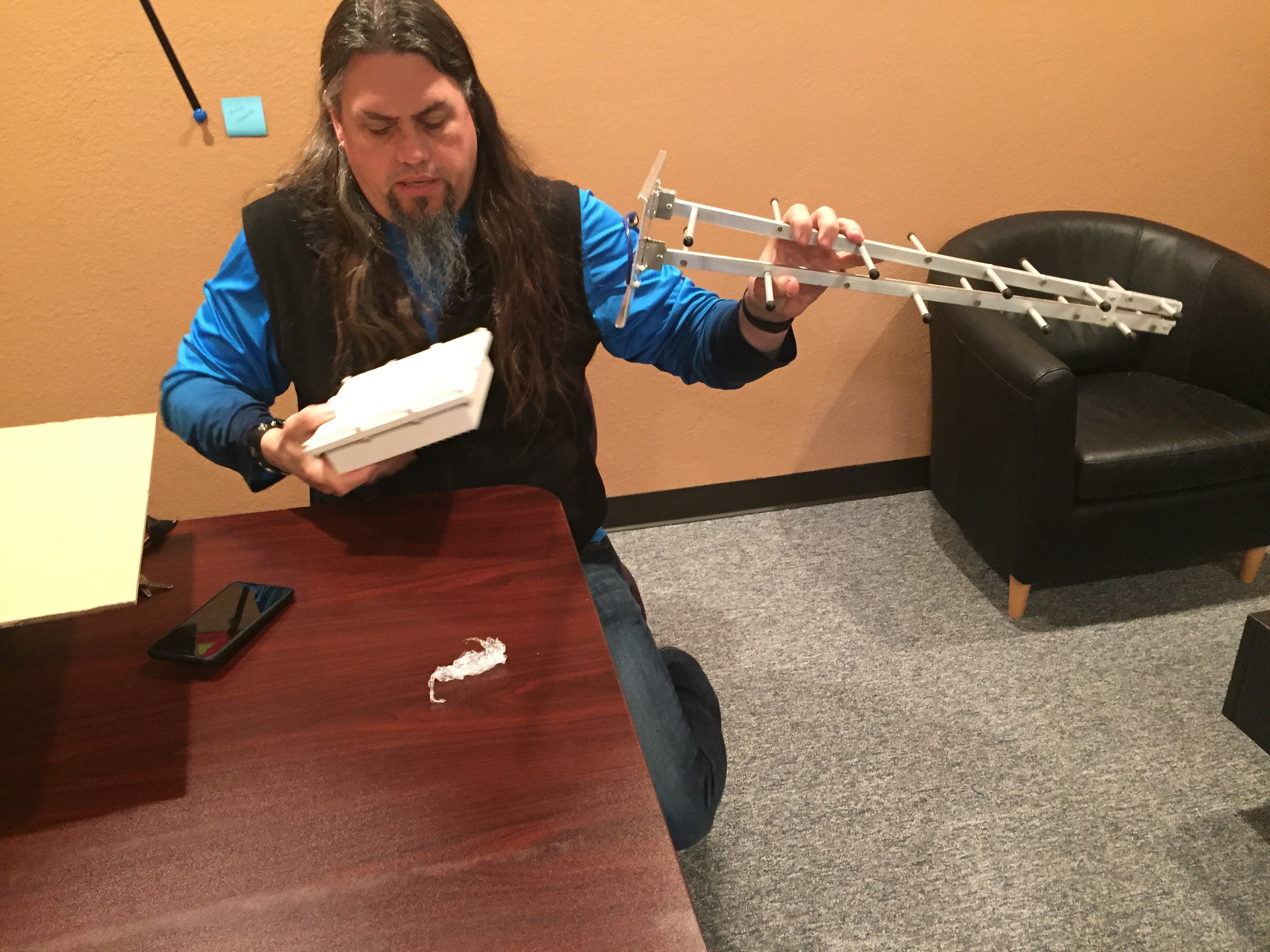While Native American communities remain the least connected in our nation, inroads are being made in t heir use of ICTs. Through tribally owned and operated ISPs as well as collaborations between tribal governments and non-tribal providers, reservations are building out infrastructure. Yet, there is little understanding as to the nature of those network enhancements, how they’re being managed, and their effects on users.
heir use of ICTs. Through tribally owned and operated ISPs as well as collaborations between tribal governments and non-tribal providers, reservations are building out infrastructure. Yet, there is little understanding as to the nature of those network enhancements, how they’re being managed, and their effects on users.
In this collaborative project between UCSB, Georgia Tech, and Penn State, we develop technologies and theories to enhance connectivity in Native American communities. The interdisciplinary project contributes to theories of network innovation and connectivity in marginalized communities, as well as network innovations to extend access and understand usage patterns. The project combined close interactions with tribal leaders and ISPs, together with work in labs.
Examples of the close interactions include PI Belding’s work on network trace data collection, with on-site visits conducted in October 2018, February 2019, and May 2019. The visits enabled network performance readings over an operational TVWS client radio and spectrum scans on LTE and TV white space frequencies to assess spectrum
availability. These technical visits, complemented earlier research engagements by the Georgia Tech and Penn State teams.
Personnel
Elizabeth Belding, Beki Grinter, Carleen Maitland, Ellen Zegura, Morgan Vigil-Hayes, Vivek Adarsh, Rich Caneba, Michael Nekrasov, Esther Showalter.
Partners
Tribal Digital Village (ISP)
Broader Impacts
Our work contributes to the nascent scholarship on rural Internet and tribal social media use on Native American reservations. Through quantitative measurement we are able to characterize connectivity from a client-centric point of view in carefully chosen locations (rather than relying, for example, on service provider reports of connectivity or crowdsourcing), and through qualitative interviews we are able to add richness about how and why individuals use the Internet (or do not) and how the work of deploying new network technologies is conducted. This investigation of a socio-technical system in a specific cultural context provides a basis for the design and evaluation of new systems (such as our FiDO system for improved content delivery) and points to the need for additional methods to better quantify progress and identify opportunities for universal Internet access.
Publications
Canevez, R., Maitland, C., Ettayebi, S., Shaw, J., Everson, C., & Rantanen, M. (2020). The Expression of Power in ICT’s Knowledge Enterprise: An Empirical Illustration of Computing’s Colonial Impulse. In Proceedings of the 2020 International Conference on Information and Communication Technologies and Development (pp. 1-5). pdf
Canevez, R., Maitland, C. and Rantanen, M. (2020), “A Dynamic Perspective of Internet Service Provider Adoption of Emergent Network Technology: A Case Study of Tribal Digital Village,” Journal of Information Policy, 10, pp. 83-122. pdf
M. Nekrasov, V. Adarsh, U. Paul, E. Showalter, E. Zegura, M. Vigil-Hayes and E. Belding, “Evaluating LTE Coverage and Quality from an Unmanned Aircraft System“, 16th International Conference on Mobile Ad-hoc and Smart Systems (IEEE MASS), Monterey, CA, Nov. 2019.
V. Adarsh, M. Nekrasov, E. Zegura and E. Belding, “Packet-level Congestion Estimation in LTE Networks using Passive Measurements“, ACM Internet Measurement Conference (IMC), Amsterdam, Netherlands, October 2019.
E. Showalter, N. Moghaddas, M. Vigil-Hayes, E. Zegura and E. Belding., “Indigenous Internet: Nuances of Native American Internet Use“, ICTD, Ahmenabad, India, January 2019.
Caneba, R. and Maitland, C. (2019) “Dynamics of Technological Mediation: A Case of Television White Space Deployment,” (Note) Proceedings of the 10th ACM Conference on Information and Communication Technologies for Development (ICTD), Jan. 4-7, 2019, Ahmedabad, India.
Maitland, C. F. (2018) “Now you see it, now you don’t’ – Digital Connectivity in Marginalized Communities,” IEEE Computer, June, 2018, pp. 32-41. pdf
M. Vigil-Hayes, E. Belding and E. Zegura, “FiDO: A Community-based Web Browsing Agent and CDN for Challenged Network Environments“, Proceedings of the ACM on Interactive, Mobile, Wearable and Ubiquitous Technologies (IMWUT), 1(3), Sept. 2017.
Field Research on TVWS Equipment Installation
After many trials, hand wringing, and consternation over antenna heights, the TV White Spaces connections have been deployed. Here is a photo of Rich on the exciting day – June 14th, 2017.

Rich on roof at Santa Ysabel
Reports of our project have appeared in both Vice Media (Sept 2017) and the Penn State News (July 2017).
Background

The Pala are one of the 19 tribal members of the SCTCA
In this project, we apply our expertise gained in working in international communities and with international organizations, to understand the provisioning and use of ICTs in the sovereign nations of U.S. Native American tribes. Working with the Southern California Tribal Chairman’s Association (SCTCA) and their ISP – Tribal Digital Village, we are contributing our organizational perspectives to research on the deployments of new white spaces technologies.

TDV leader Matt Rantanen explains the new white spaces equipment
This research is being conducted with support of the National Science Foundation (award #1562613 )
